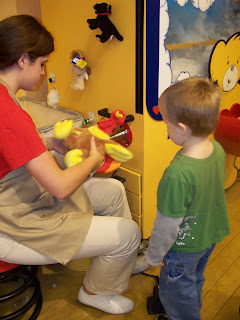A physician who is intuitive and a Reiki Master/Teacher discusses healing from 'the front lines' of the mind-body connection in the hospital setting.
- Access Portal for the Divine Healing Codes
- Reiki And Medicine
- Prayers Of The Heart
- Archangel Healing Keys
- Spiritual Toolbox
- The Ten Healing Steps--A Ten Day Guided Meditation...
- Mother Mary Messages
- Divine Mother Blessings Healing Jewelry
- Free eBook: Messages From My Patients
- Shhhhh!
- Known Incarnations of Archangels and Angels
- Orcapod Reiki
- The Garden Of Healing
- Poverty of Spirit
- Ascension Advocacy
- Android App for Divine Healing Codes!!!
- Financial Statement for the Christmas Bracelet Giveaway
- Financial Statement for the Possibility of Transition Bracelet Project
- Awakening Guide
- Out of Shadows With Links to Multilingual Translations
Tuesday, January 25, 2011
Breaking the Trail
Have you ever come across a 'train wreck'? You know what I mean--the kind of patient where everything goes wrong with them, all the time, no matter what. A lot of drama.
I had one yesterday. A BMI of 55 with the worst airway I have ever seen going to the O.R. Because of my hospital's electronic medical record, I was able to track the height and weight ahead of time, as well as the pertinent medical history and surgical history. This patient needed a brief procedure prior to the case. I gave strict instruction that no one except an anesthesiologist was to provide sedation for this brief radiologic intervention. It could be lethal, if the airway was lost. The patient would stop breathing and not be rescue ventilated properly from 'conscious sedation' that was the routine in that part of the hospital. Only experienced hands could get air through that mask through the corpulent mouth into those lungs once apneic.
I met the patient *in* the radiology suite. Called there emergently. The patient and doctor were both screaming. Doctor, in frustration over the size of the patient making the procedure technically near impossible. And patient in fear, I quote, 'I was dying!'. Both wanted sedation but it was not an option. I had full drug box with me, but one look at that airway, flat on the table, and I said 'no'.
Except for the 'verbal valium'. Some patients are so sick, they cannot be sedated. Only a calm, reassuring prescence to calm them down. I use it all the time. In c-sections, for the anxious, I cannot sedate because the baby will absorb through the bloodstream and be born floppy. Instead of charting, I hold hands for the few moments before the baby is born. This is the tactic I used in the radiology suite. Asking the questions I would ask in pre-op to distract and calm the patient. Examining the mouth and listening for cardiac and breath sounds. Explaining what to anticipate in the procedure, and how much longer it would take. 'It will be done in ten minutes'.
By the time I got to pre-op, the patient was quite worked up. The family was supportive and said the patient, 'gets emotional'. Sometimes this is secondary gain (attention seeking), sometimes it is from deeper psychological issues.
Navigating the emotional environment is difficult in the hospital. Emotions are contagious.
As a Reiki Master, I draw from my source to calm others. But at this time, I was not calm. I was drained, concerned about the technical challenges of intubation, and busy with the tasks of preparing equipment for safe anesthesia. I had a blanket ramp for optimization of the airway, a GlideScope video device to help in cases of difficult airway, a special endotracheal tube I'd never used before, but was made just for cases like this, and an experienced assistant as an extra pair of hands.
I waited for end-tidal O2 to reach ninety-nine percent. The morbidly obese desaturate to BLUE in thirty seconds. Breathing out pure oxygen only happens when all of the tissues are saturated with oxygen. The 'tank is full' and 'buys the most time' until intubation without desaturation. The best I could get was ninety-two. I took it. With a 'cho ku rei' I induced anesthesia. I did a deep intubation with the glide scope so as not to burn any bridges if the airway was difficult. Even the tube did not want to pass, although the cords were open and I had a clear view. Three times I tried, even using the trick to line the bevel up with the glottis. And it went in.
Once the surgery was underway, and my charting caught up, I thought to myself...this patient is a MESS. It took some time for the thought to come up that 'Reiki is what this is all about'--making change for the positive in an otherwise not so positive life. Small gains, big losses, try a 'hail mary' pass for the team. So I did choose to give an intraop Reiki treatment.
The energetics of this patient were quite different from the ordinary sick. I learned a lot from my brief Reiki session with this case. And a lot about myself. I wanted to laugh, scoff, and brush it off...the negative energy cloud from this patient. But on second thought, isn't that what healing is all about?
This afternoon I did a post-op and checked to see if everything was all right. The same drama, the same habitus, the same horrible airway. But one patient very much alive. With successful surgery. And no complications. And maybe, a little something 'extra' in the mix...Reiki Universal Healing Energy. ; )
